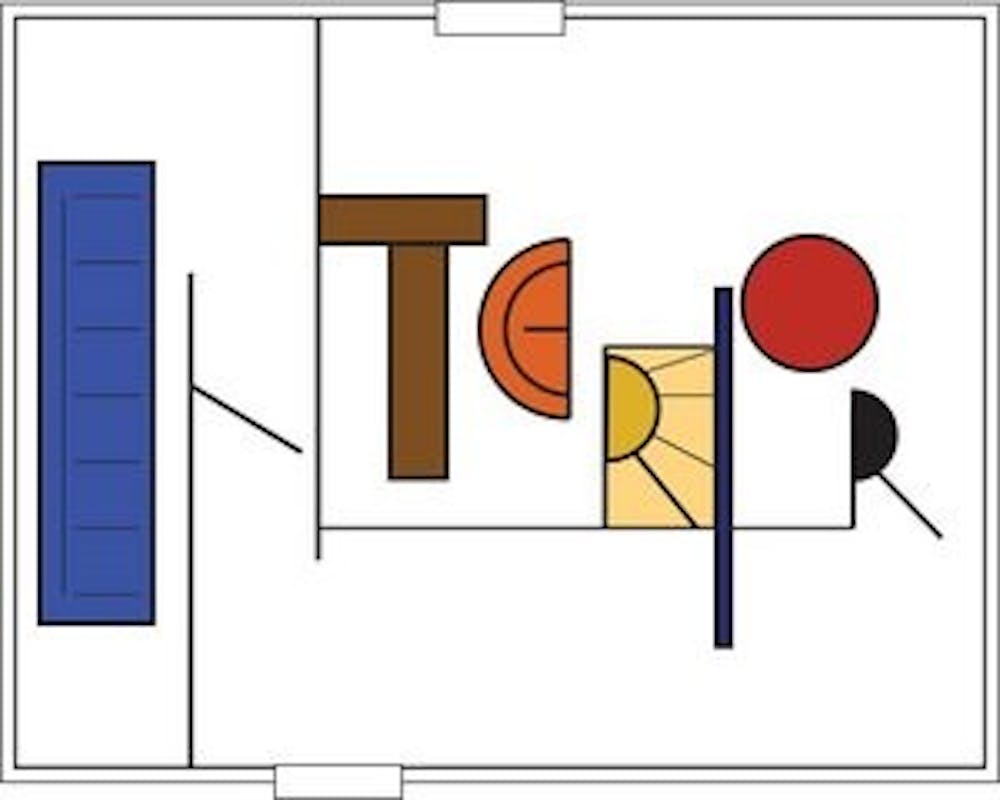When people hear the words "interior designer," they often think of someone who makes things look pretty for a living. In reality, it's much, much more.
Katie Scheid, junior in the top-ranked interior design program, knows this all too well.
"A lot of people think that interior design is just picking out paint colors," Scheid said. "There are days when I wish I was just picking out paint colors, because in my program there is a lot more technical stuff to it than just making things look pretty."
The four main areas of study for interior design students are residential, hospitality, non-residential and commercial.
"We take two studios each semester," Scheid said. "One studio is Monday and Wednesday, and the other studio is Tuesday and Thursday. We go to studio either right after lecture or a little bit later in the afternoon, and it's for three hours."
Scheid said lecture is a time for students to learn about concepts, while studio is time to work on assignments and projects.
"In residential, we're talking about kitchens and what kind of kitchen layouts you would do, and in studio you're either working on a project or using the time to ask questions or do exercises," Scheid said.
Other than some quizzes and essay assignments, grades are mostly determined by projects.
"We took a painting by a famous artist and blew it up so that it was four feet in one direction, and then it got gritted off into half-inch squares, and each square we had to paint," Scheid said.
"All we were doing was cutting and gluing squares for three weeks. It turned out really cool but it took me over 150 hours to finish."
Mary Caillouet, junior in interior design, is currently working on a project for a hotel.
"Right now, we're designing an international spa for an existing hotel that was done by the top-10 ranked design firms last year," Caillouet said. "We're supposed to do all the architectural components."
Before Auburn's interior design program could become a top-ranked program in the nation, it had to have the appropriate accreditations.
"We're a CIDA (Council for Interior Design Accreditation) accredited school, which is a very big deal," Caillouet said.
"Every project that we do they save, so a board could come in and analyze what our program does and what our professors are teaching us, so that helps with the ranking. The success of the people out in the field that graduated from Auburn also determines the ranking."
Scheid said the professors contribute much to the success of the program.
"They do a really good job of trying to expose you to all aspects of interior design," she said. "We'll do a whole semester of just residential or a whole semester of commercial. You really get exposed to everything and know different aspects and what you do and don't like."
Students in the program regularly take field trips.
"You can see a picture of something or see something on the Internet, but I don't think it compares to actually going to a place and seeing what something really looks like," Scheid said.
"I think it's cool that they let us see real world situations, so that when we get out into the real world we'll know what to do."
Caillouet said the students go on many different trips and recently took a trip to see a residence being built by an interior designer.
"Just last week we went and saw a local designer's studio in Montgomery," Caillouet said. "Two weeks ago we went to Peachtree City, Ga., and went to a lighting lab so we could learn about lighting fixtures and wattages and stuff that normal people don't understand."
Scheid said the lab gave presentations on lighting so the students would be able to make educated choices when inspecting and choosing light fixtures.
"In residential class, we've gone to a bunch of different construction sites, which is cool because we can see the different phases of construction," Scheid said.
What may be misunderstood is that the interior design program is not affiliated with the architecture program at Auburn.
"We're with the College of Human Sciences because we want to focus on consumer needs," Caillouet said.
"We focus on personality and that sort of thing, so it's so much beyond the structure and decoration of a space."
Do you like this story? The Plainsman doesn't accept money from tuition or student fees, and we don't charge a subscription fee. But you can donate to support The Plainsman.




